What's Cooking? Culinary Creations with a Scientific Twist
Earth and Environmental Sciences Professor Zunli Lu combines his passion for research and cooking. The results are tasty, science-inspired dishes.
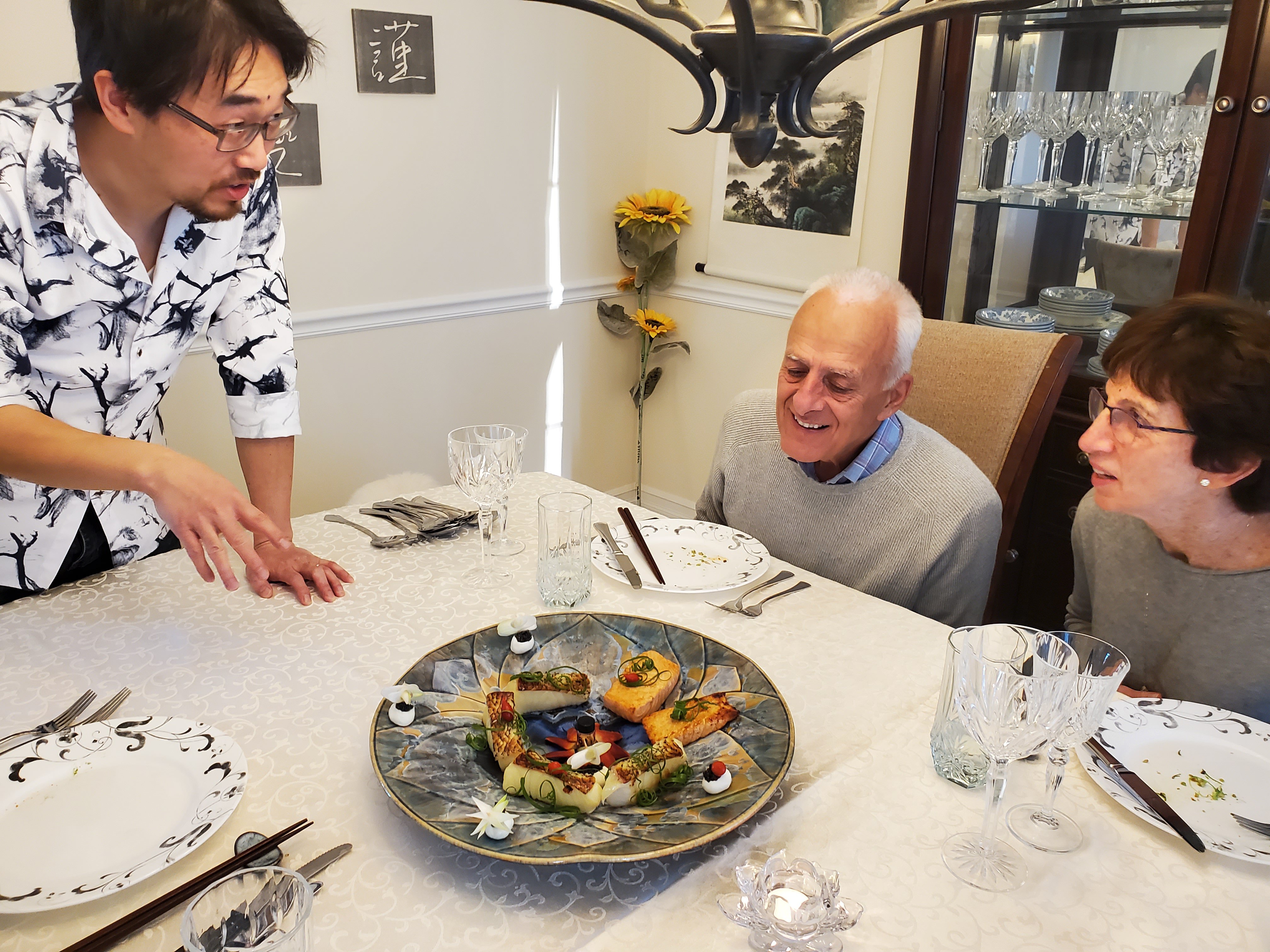
By day, you can find Zunli Lu, Thonis Family Professor of Earth Sciences in the College of Arts and Sciences, teaching and researching about the co-evolution of life and the planet. By night, chances are you’ll find him in his kitchen creating stunning dishes that combine his interests in Earth science and cuisine.
Lu’s passion for cooking started while he was a graduate student at the University of Rochester. He says, like many students, being on a tight budget often forced him to dine in, so he would use that opportunity to infuse creativity into his cooking. He’s honed his culinary skills over the years by watching YouTube videos, and his talents have evolved to the point where he now themes his dishes after his areas of scientific expertise.
Since joining the University in 2011, Lu’s research has sought to improve people’s understanding of how catastrophic environmental changes drove mass extinctions in the ancient past, so that people today can try to anticipate the consequences of current climate change. In recognition of his research and teaching excellence, Lu became the Department of Earth and Environmental Sciences’ third Thonis Family Professor earlier this year, made possible by the generosity of Life Trustee Mike ’72 and Susan Thonis. When they came to Syracuse for Lu’s investiture, he invited Mike and Susan to his home where he cooked up a fusion dinner in which each course alluded to pivotal transitions in Earth's history.
Explore how Lu connects food and science in the image gallery below from his dinner with the Thonises.

Zunli Lu prepares a seafood dish featuring salmon and seabass. In the center of the dish is a vial containing an otolith – a small bone from the inner ear of fish that grows rings, similar to trees. By measuring trace elements in otoliths, Lu can learn more about the life cycle of a fish, revealing information such as hypoxia (low oxygen) in modern oceans.
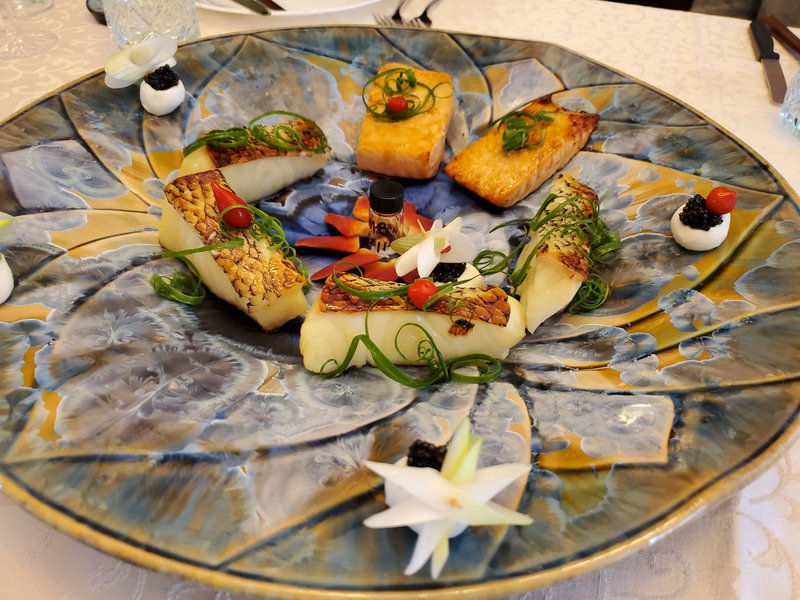
A closeup image of Lu’s seafood dish. In his research, he studies anoxia – times in history when the oceans were depleted of oxygen. Low ocean oxygen levels caused by climate change and nutrient pollution can affect the ability of sea life to survive, a very tangible connection between Lu’s dish and his research.

Lu served seaweed salad and avocado sushi balls on a piece of calcite – a mineral found in limestone. As a geochemist, Lu uses iodine (a micronutrient enriched in seaweed) to study the impact of climate change in ocean environments. The calcite is also significant in his research because the fossilized debris embedded within sediments and rocks serve as a geological record of the iodine levels.
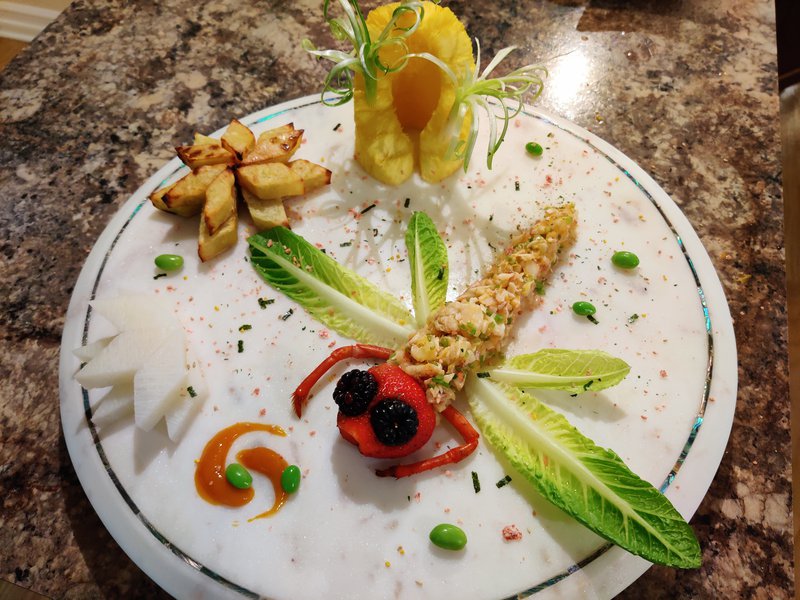
Lu says this is a dish reminding us of the profound global changes caused by trees with deep root systems conquering the continents. Scallions are carved into the shape of trees. Two types of yams symbolize the roots of vascular plants.
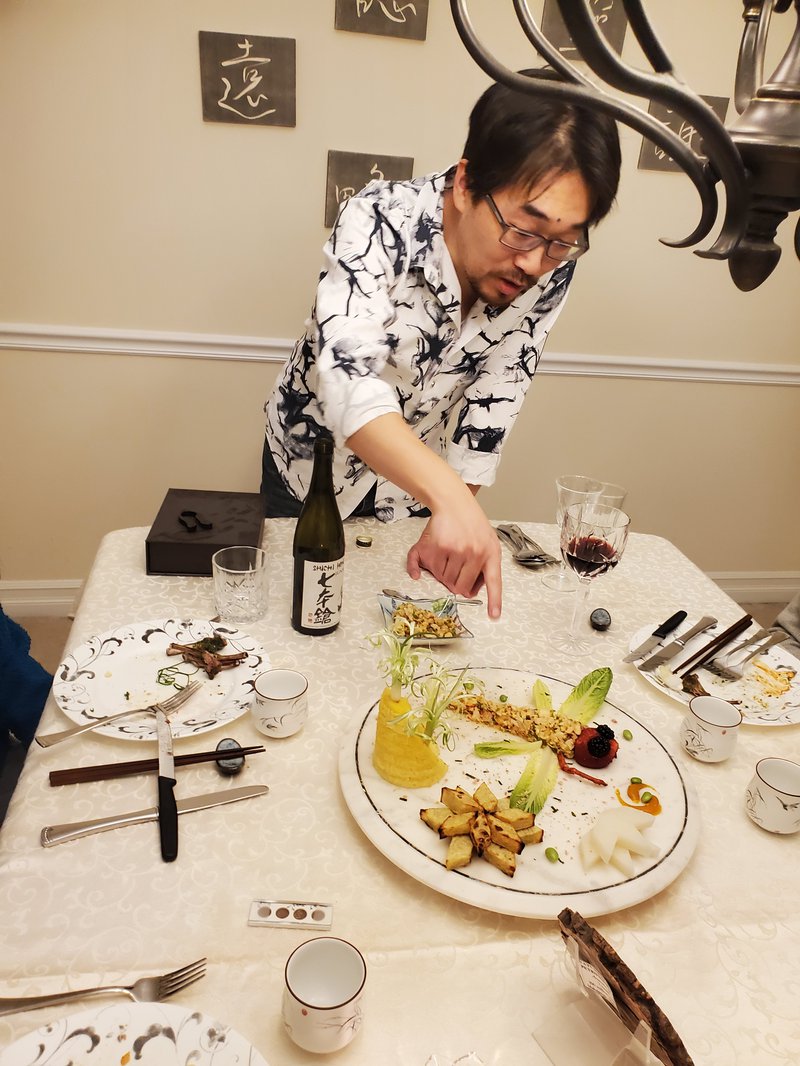
Zunli Lu explains to the Thonises how an increase of atmospheric oxygen level related to land plants led to large dragonfly-like organisms with wingspans up to a meter long. An original lobster recipe is plated as the dragonfly to represent this episode of Earth history.
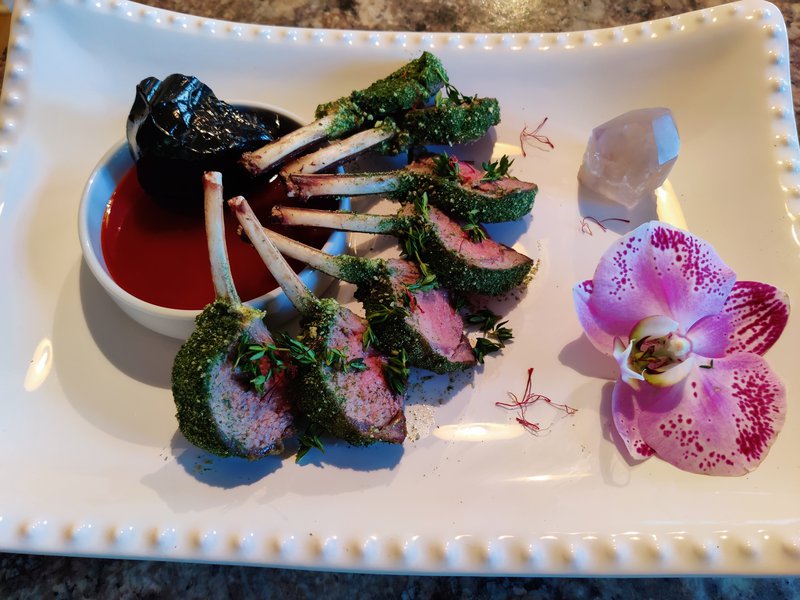
Lu garnished this rack of lamb dish with a bowl of sweet-sour chili sauce containing an obsidian rock to simulate major volcanic eruptions that were linked to several mass extinctions. Obsidian is volcanic glass produced when lava erupts from a volcano and cools so quickly that mineral crystals do not have time to form.
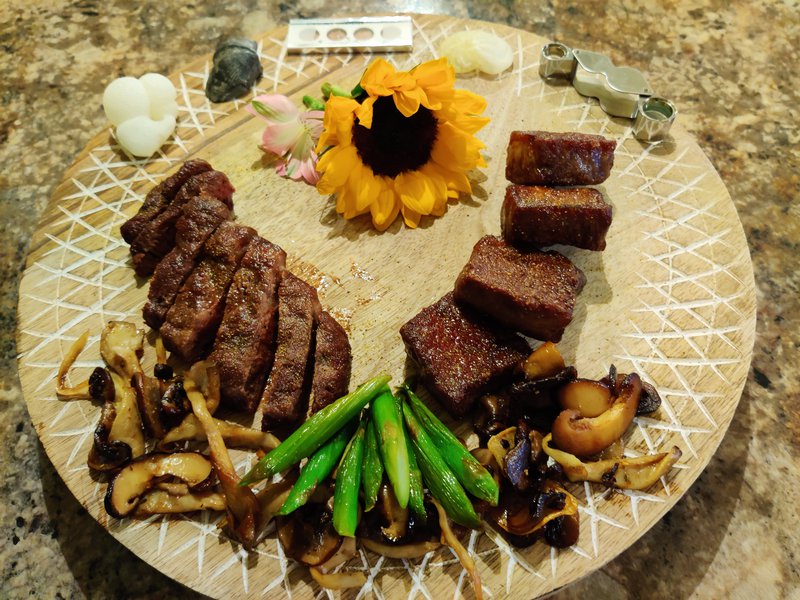
Enlarged 3-D prints of micro-fossils commonly used to study ancient ocean conditions during the extinction of dinosaurs are presented with a steak dish.
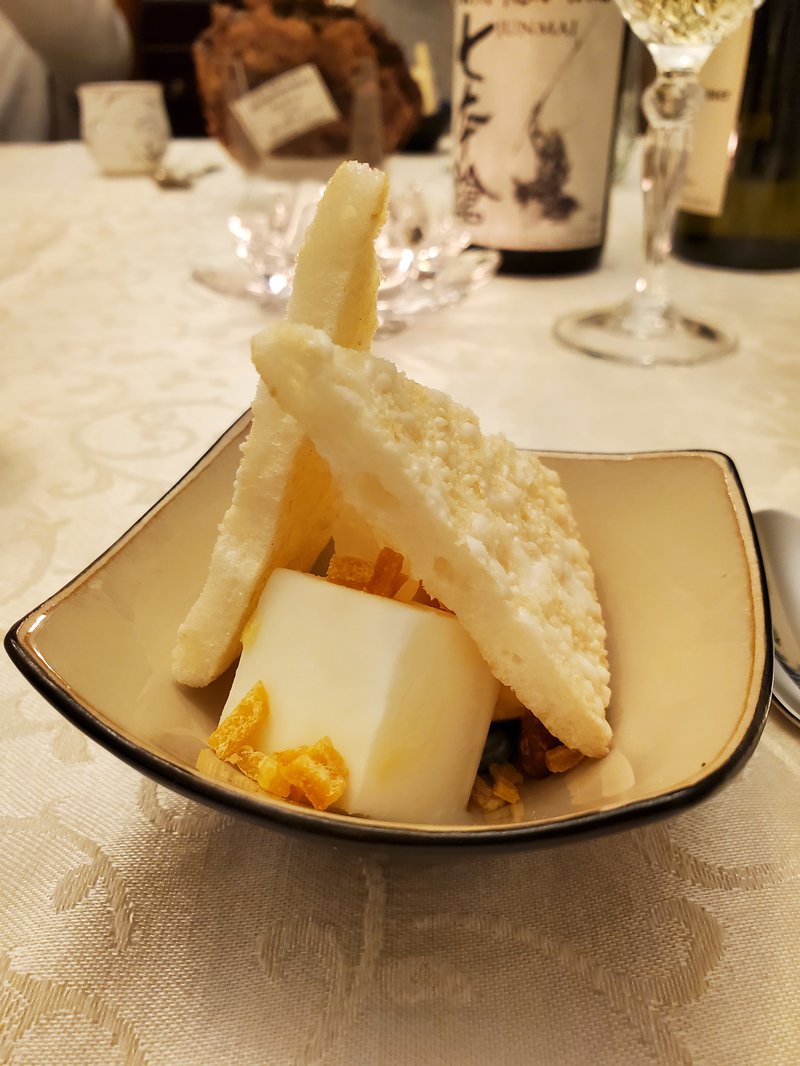
A dessert concludes the meal and represents the super glaciations that covered much of the Earth surface to even low latitudes, known as “Snowball Earth.” Mixed sorbet and rice crackers mark craggy ice sheets and blocks. Pebble-looking chocolates hidden underneath simulate the dropstones, which are rocks found in oceanic sediments that transported over great distance with drifting icebergs.
Featured
Zunli Lu Thonis Family Professor: Low-Temperature Geochemistry and Earth System Evolution
